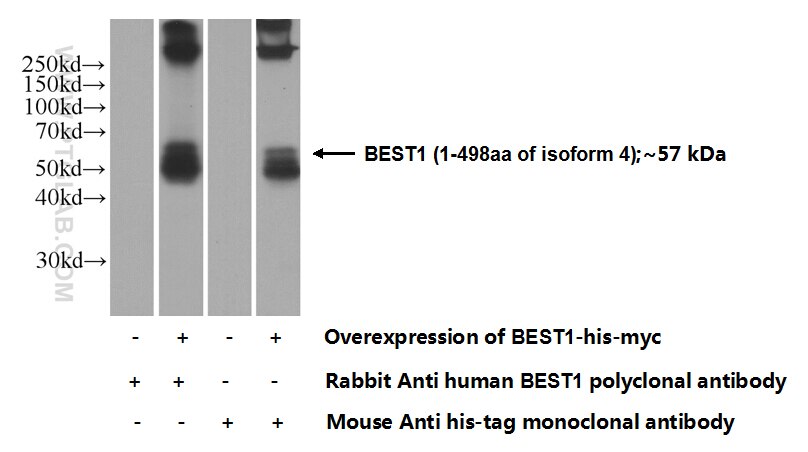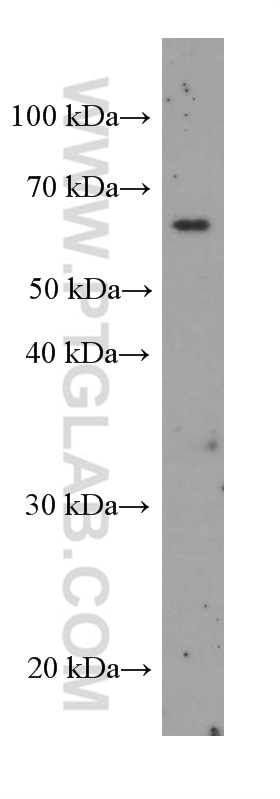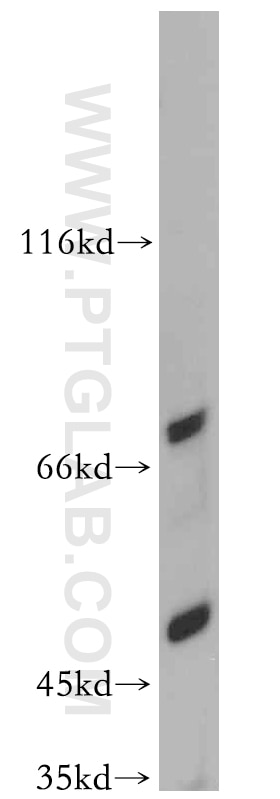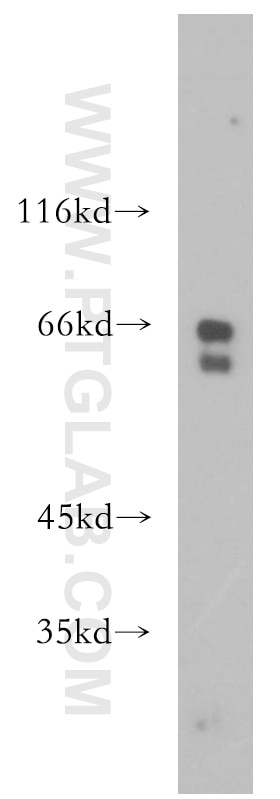Bestrophin-1 Polyklonaler Antikörper
Bestrophin-1 Polyklonal Antikörper für ELISA
Wirt / Isotyp
Kaninchen / IgG
Getestete Reaktivität
human und mehr (1)
Anwendung
WB, IF, ELISA
Konjugation
Unkonjugiert
Kat-Nr. : 21910-1-AP
Synonyme
Galerie der Validierungsdaten
Geprüfte Anwendungen
Empfohlene Verdünnung
| Anwendung | Verdünnung |
|---|---|
| It is recommended that this reagent should be titrated in each testing system to obtain optimal results. | |
| Sample-dependent, check data in validation data gallery | |
Veröffentlichte Anwendungen
| WB | See 1 publications below |
| IF | See 1 publications below |
Produktinformation
21910-1-AP bindet in WB, IF, ELISA Bestrophin-1 und zeigt Reaktivität mit human
| Getestete Reaktivität | human |
| In Publikationen genannte Reaktivität | human, Ratte |
| Wirt / Isotyp | Kaninchen / IgG |
| Klonalität | Polyklonal |
| Typ | Antikörper |
| Immunogen | Bestrophin-1 fusion protein Ag15129 |
| Vollständiger Name | bestrophin 1 |
| Berechnetes Molekulargewicht | 585 aa, 68 kDa |
| GenBank-Zugangsnummer | BC015220 |
| Gene symbol | BEST1 |
| Gene ID (NCBI) | 7439 |
| Konjugation | Unkonjugiert |
| Form | Liquid |
| Reinigungsmethode | Antigen-Affinitätsreinigung |
| Lagerungspuffer | PBS mit 0.02% Natriumazid und 50% Glycerin pH 7.3. |
| Lagerungsbedingungen | Bei -20°C lagern. Nach dem Versand ein Jahr lang stabil Aliquotieren ist bei -20oC Lagerung nicht notwendig. 20ul Größen enthalten 0,1% BSA. |
Hintergrundinformationen
Bestrophin-1 (BEST1) is a 68 kDa transmembrane protein which belongs to the bestrophin family of anion channels. It is predominantly expressed in the basolateral membrane of the retinal pigment epithelium. Studies show that bestrophin 1 functions as a Ca(2+)-dependent Cl(-) channel and modulator of voltage-dependent L-type Ca(2+) channels. It may also contribute to the basolateral cell conductance in airway epithelial cells. This protein is encoded by the VMD2 gene. Mutations in VMD2 can lead to different types of retinal or macular degenerations, including Best vitelliform macular dystrophy (BMD), autosomal recessive bestrophinopathy (ARB), autosomal dominant vitreoretinochoroidopathy (ADVIRC) and adult-onset vitelliform macular dystrophy (AVMD).
Publikationen
| Species | Application | Title |
|---|---|---|
iScience Induced retinal pigment epithelial cells with anti-epithelial-to-mesenchymal transition ability delay retinal degeneration | ||
Sci Rep CLIC4 regulates late endosomal trafficking and matrix degradation activity of MMP14 at focal adhesions in RPE cells. |






